Orchestra Wellington presents
ENEMY OF THE STATE
JOHN PSATHAS – Next Planet
ALEXANDER GLAZUNOV – Violin Concerto
DMITRI SHOSTAKOVICH – Lady Macbeth of the Mstensk District –
(Suite from the Opera – arr. Marc Taddei)
Benjamin Baker (violin)
Madeleine Pierard (soprano)
Hutt City Brass
Marc Taddei (conductor)
Orchestra Wellington
Michael Fowler Centre, Wellington
Saturday 18th October 2025
Concert programmes can be tricky things to put together, whatever the aims and objectives of those who consider what might best fulfil projected outcomes. Some will prioritise the idea of pleasing what would be considered a requisite amount of people for attendances’ sakes, looking to assemble repertoire that’s either tried and true, or novel in a sense of interest generated by reputation or even recent sensation. Others wanting to explore less well-worked vistas which however indicate sufficient potential for attracting interest will gradually build momentums of discovery and exploration for audiences to ease themselves into and hopefully relish such discoveries and thus be enthused all the more, developing a positive and lasting momentum of support.
Obviously my scenario descriptions show a bias in favour of the latter, mainly because it’s a scenario which I think Marc Taddei and Orchestra Wellington have followed throughout this present season with considerable success, and in their own distinctive way – Taddei could have alternatively “cherry-picked” Russian composer Dmitri Shostakovich’s entire symphonic output over the six concerts, or presented an amalgam of symphonic and concertante works, but instead chose to concentrate on a specific era of the composer’s creative achievement, in this case (and quoting the title of one of the concert programmes) very much “Under the Dictator’s Shadow”.
What it’s meant is that we’re being given an in-depth resume of a significant period of activity by one of twentieth century music’s most significant creative artists while in the throes of institutionalised disapproval almost to the point of persecution at the hands of the authorities, personified (and instigated) by the Soviet dictator Josef Stalin. The final concert of the sequence will present to us a composer’s ostensible “giving way” to a dictator’s demands with what seems a public gesture of submission, while privately and through encoded musical gesturings, expressing and maintaining defiance. Some commentators continue to maintain that, despite such ambiguities the composer’s behaviour suggests an acquiescence to the Soviet regime even after Stalin’s death, while others tend to disagree, a debate that continues to divide opinion.
This latest concert instalment of the sequence highlights a particular flashpoint in the dictator/ composer relationship, the latter’s 1934 opera “Lady Macbeth of the Mtsensk District”, a work that had achieved popular success until Stalin took it upon himself to attend a performance, late in January 1936, and famously leaving the theatre before the work’s conclusion. Little time was wasted in expressing his displeasure at what he heard, via the Soviet newspaper Pravda’s notorious review of the work a couple of days afterwards, bringing down the dictator’s ire, along with that of his collection of toadies that made up institutionalised Soviet officialdom, on the composer’s head.
Pravda’s resounding phrase “Muddle instead of Music” has since, along with similar examples of critical invective levelled against Shostakovich, triumphantly vindicated Oscar Wilde’s famous quip “There is only one thing worse in the world than being talked about and that is NOT being talked about”, Even though in situ there were , of course, attendant dangers for artists in Stalin’s Russia in voicing any criticism of the regime, history has come out with firmly positive views regarding the opera’s artistic validations of life and culture for Russian people in the era of the time, set within its wider depictions of human universality.
Though even in its somewhat truncated form here “Lady Macbeth” simply dominated in almost every way its concert companions on this occasion, both offerings allowed us a modicum of “food for thought” of divergent kinds. The concert opened with a work by John Psathas, a superbly-ambient “spaced-out” orchestral experience whose title “Next Planet” nevertheless posed for me more questions than it answered by the time the music had run its unexpectedly brief inter-planetary course. Psathas’s work was jointly commissioned by the Tonnhalle Dusseldorf GmbH and the Dusseldorf Symphony as part of an extended environmental protection project whose theme was “sustainability within the concert experience” – “Next Planet” was one of twelve works, each assigned to different sustainability topics, though Psathas, who co-ordinated the project, was allowed to choose his own topic. His response was to write a piece about “the self-aggrandizing heroes…intent on spending billions in taking a few people to Mars, rather than invest that money in improving life here on Earth……”
On the face of things, the music depicted little more than what seemed like the outer-space equivalent of “a short ride in a fast machine” – but I was taking the music at its face value instead of looking for clues suggesting hidden meanings and agendas. It may be that Psathas’s piece might perhaps have been more appropriately performed in the orchestra’s finai concert along with the Shostakovich Fifth Symphony, (as “coded” a piece of outwardly-optimistic composition as ever was conceived!) – Psathas’s contempt (heartily endorsed universally) for such inappropriately self-glorifying undertakings would have then made a splendidly fatuous-sounding adjunct to Shostakovich’s hollowed-out paeans of praise for an already brutal and repressive regime and its great leader!
Though I would have just as happily heard some examples of shamefully-neglected music by Rimsky-Korsakov (those splendid suites from “Tsar Saltan” or “Le Coq d’Or”) as examples of anti-establishment artistic expression, I took heart at reading about the supportive stances and various kindnesses shown to his fellow composers (including Shostakovich) at various times by Alexander Glazunov, whose Violin Concerto was here programmed. The only previous work I had heard of Glazunov’s was the delightful Ballet “The Seasons”, while his other, somewhat dubious claim to fame I’d encountered was his much-reiterated ineptitude as a conductor when placed in charge of the ill-fated premiere of the young Sergei Rachmaninov’s First Symphony!
I had never heard the Violin Concerto before – a work notable for its late-Romantic nostalgic feeling and somewhat idiosyncratic structure, its three movements being reorganised into two, with the usual slow movement “sandwiched” into the first as a kind of “interlude”, and the last movement entered without a break at the conclusion of a cadenza from the soloist. All of this fell most gratefully on the ear, and provided ample opportunity for the soloist, Ben Baker (whom we’d seen and heard at an earlier concert in Mozart’s gorgeous Sinfonia Concertante for violin and viola) to display his virtuosity and feeling for the music’s character.
Soloist and orchestra established a focused, sombre mood at the beginning, the work’s sequential passages then bringing us to the tender second subject, Baker’s tone pure and clean and delightful, with a gorgeous “silvery” aspect in places, though one that was sometimes “covered” by his accompaniments – in the scherzo-like section Baker was more assertive, leading from this into the cadenza with pin-drop concentration, and varied energies. Though one quickly tired of the rather trite fanfare theme of the finale, Baker put across great enjoyment of the more rustic of the variations, and the quickening of the tempi towards the ending brought excitement and daring to the concluding exchanges.
And so the stage was set for the performance of a Shostakovich work which in terms of range and scope and potential trouble from the ruling establishment for the composer, is almost a kind of “companion work” for the epic Fourth Symphony that featured in the orchestra’s previous Shostakovich concert,. The composer’s opera “Lady Macbeth of the Mtsensk District”, was presented tonight in a truncated but still impactful version made up of various orchestral excepts (mostly “interludes” which the composer had crafted especially for the work) and various arias sonorously delivered throughout the story by the opera’s heroine. Katerina is the bored wife of a merchant husband who spends most of his time away from her on business. She inevitably falls in love with somebody else, and her obsession with her new lover, Sergey, leads to the murders of both her father-in-law and her husband before she and her lover are eventually caught and sent to a labour camp, where Sergey, having grown tired of her, blames her for everything and rejects her, before forming an association with another woman prisoner – in the throes of despair, Katerina drowns both her rival and herself in a nearby lake.
Despite the dark savagery of much of the story, parts of it (Katerina’s arias especially) are genuinely moving, while other parts draw from Shostakovich’s gift for black comedy and irony (the picture drawn of the police force is of pure comic irony, Gilbertian, but with savage overtones). In a society where corruption is rife and brutality and misogyny are close to the surface, the story still readily resonates – to claim that it would lack basic box-office appeal (as does another reviewer, while nevertheless rhapsodising over Madeleine Pierard’s stunning vocal realisations of the aforementioned arias) is in my view a debatable point!
Music director Marc Taddei selected not only the existing orchestral interludes crafted for the opera by the composer, but excerpts from every scene of the opera, contriving, in his own words, “a concentrated symphonic portrait of her passion, independence, transgressions and tragic fate”. Certainly the juxtapositioning of charged, atmospheric orchestral narrative with Pierard’s straightaway arresting voice brought us into almost cheek-by jowl proximity with both the character and the circumstances that would shape Katerina and her destiny. As a “road map” of the opera I found it an incredibly full-on experience, though I felt it was somewhat less “of a piece” with Katerina herself when her character seemed to suddenly recede during the orchestral descriptions of the discovery of Katarina’s husband’s body, the wedding celebrations and the arrival of the police to arrest the lovers. We “connected” with her again when she returned to the front of the platform to deliver her two despairing final arias, here very properly running them into one single utterance so that the character’s opening lament is then subsumed into a nihilistic vision, giving her the only option available that makes sense – simply devastating!
Marc Taddei’s dauntless Orchestra Wellington and their sonorous cohorts, the Hutt City Brass, played their hearts out in bringing into being the composer’s extraordinarily vivid depictions of life under duress for the story’s characters. As with this orchestra’s quite extraordinary realisation of the demanding Fourth Symphony of Shostakovich a couple of months previously, the players seemed to revel in whatever demands the music made on ensemble, or tone production, with only a hiatus or two of trajectory which I noticed on the couple of occasions that conductor Marc Taddei introduced some kind of rallentando in heavily-scored passages where the ensemble seemed to have brief moments of less-than-unanimous response. For all the rest it seemed that conductor and players had again achieved something remarkable with this less-than-well-known but fascinatingly addictive and readily compelling music.
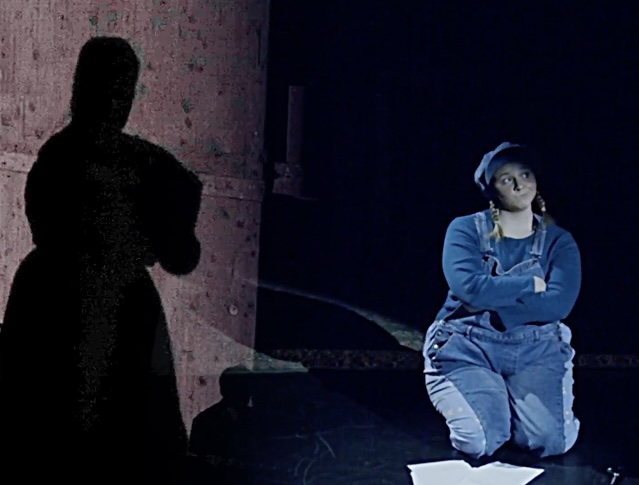
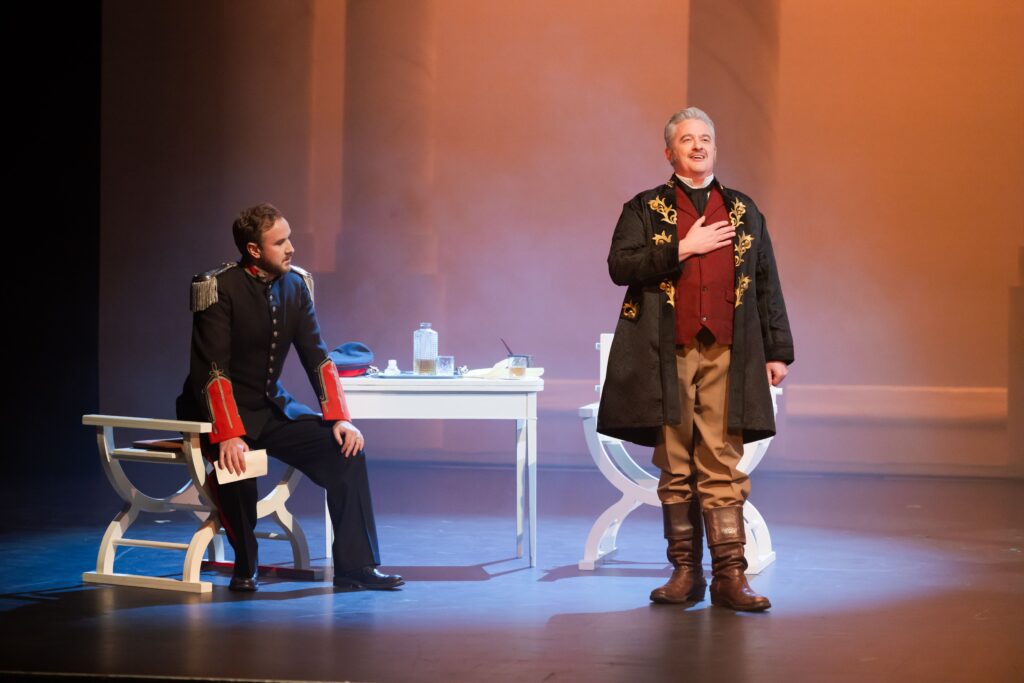 Julien Van Mellearts (Renato) and Jared Holt (King Gustavo)
Julien Van Mellearts (Renato) and Jared Holt (King Gustavo)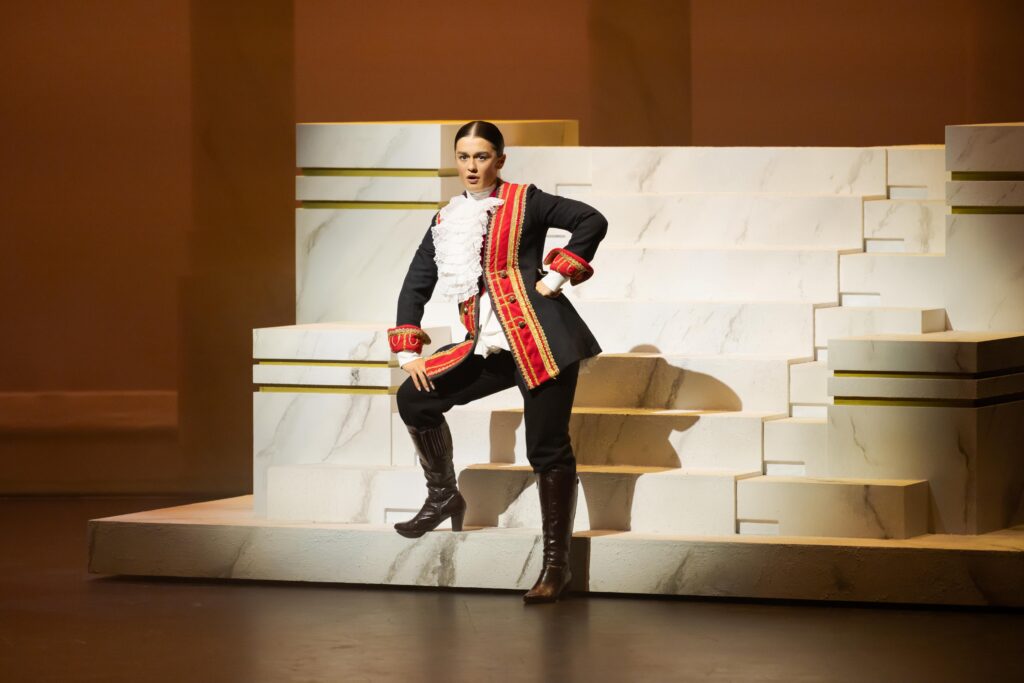 Natasha Te Rupe Wilson (Oscar) – photo, Stephen A’Court
Natasha Te Rupe Wilson (Oscar) – photo, Stephen A’Court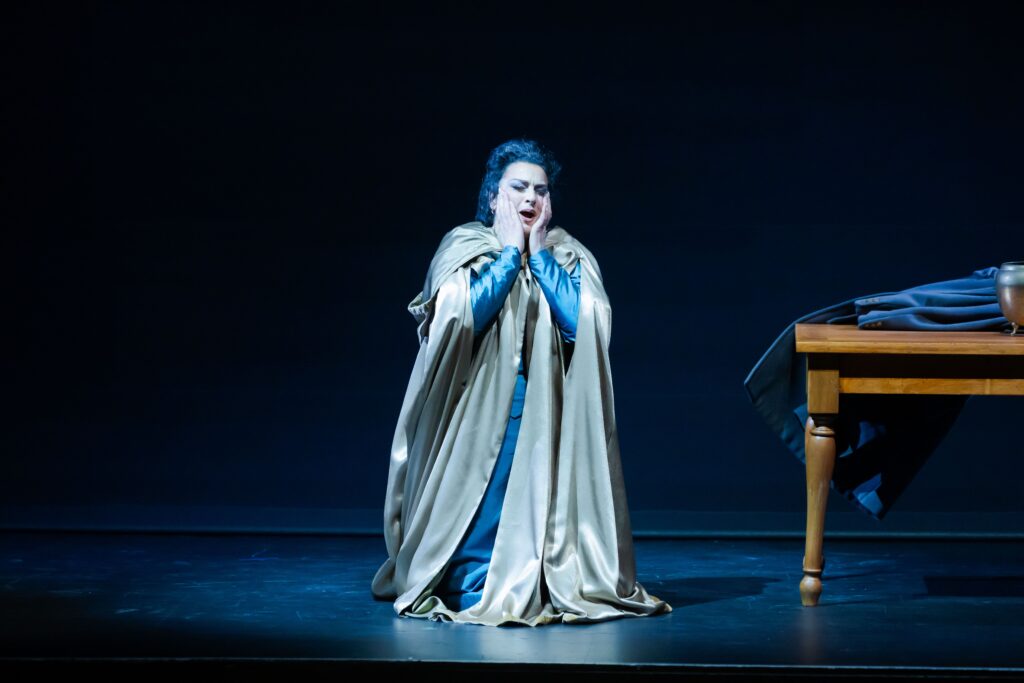 Madeleine Pierard (Amelia) – photo, Stephen A’Court
Madeleine Pierard (Amelia) – photo, Stephen A’Court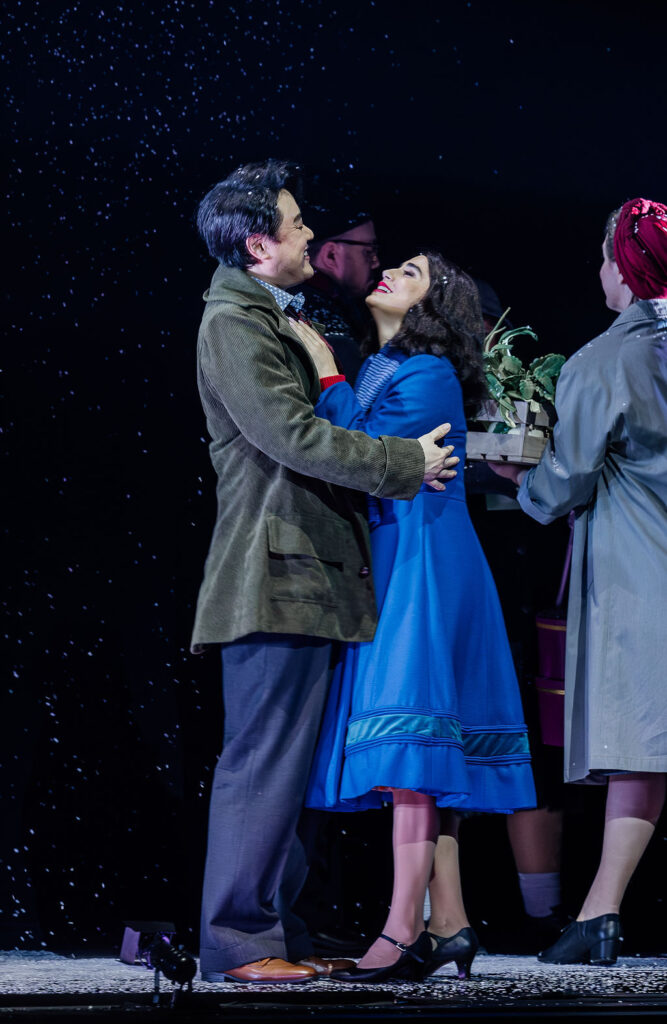
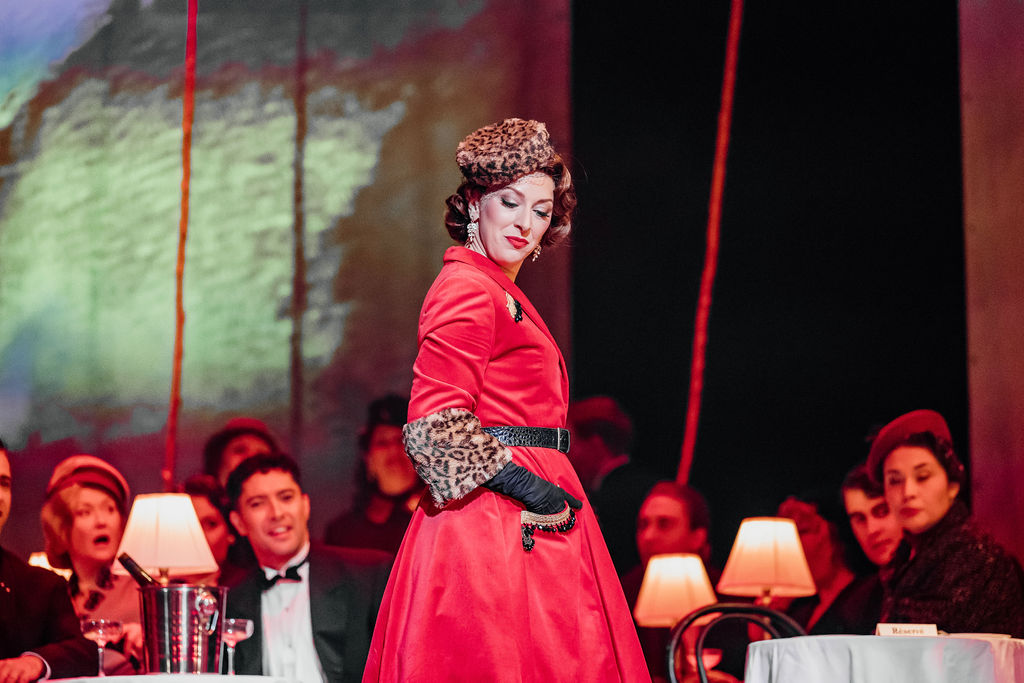 Emma Pearson as Musetta
Emma Pearson as Musetta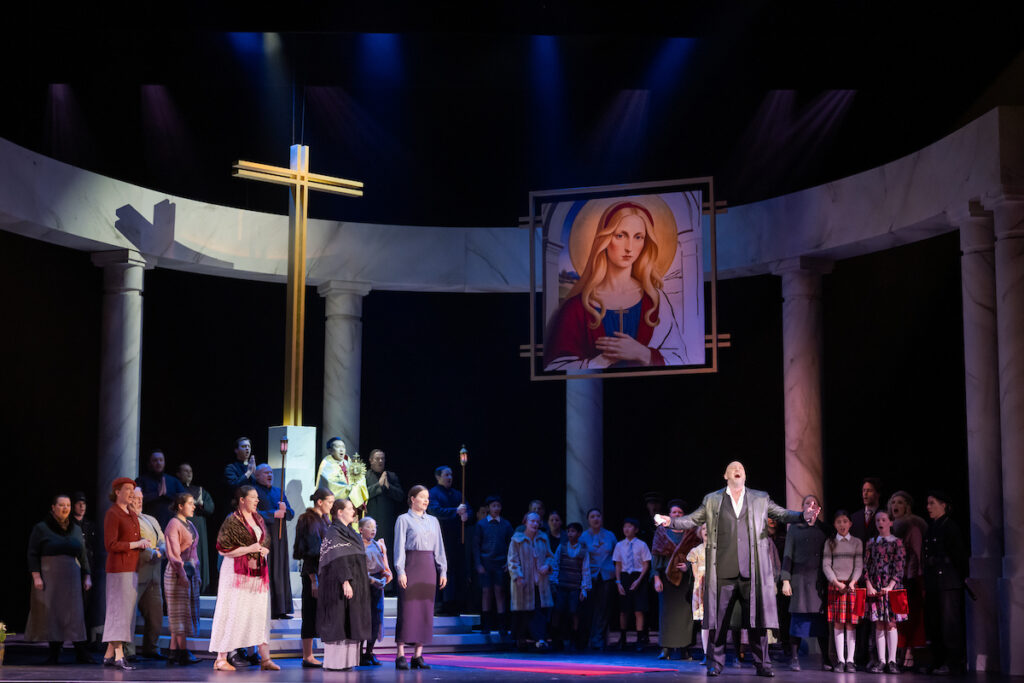
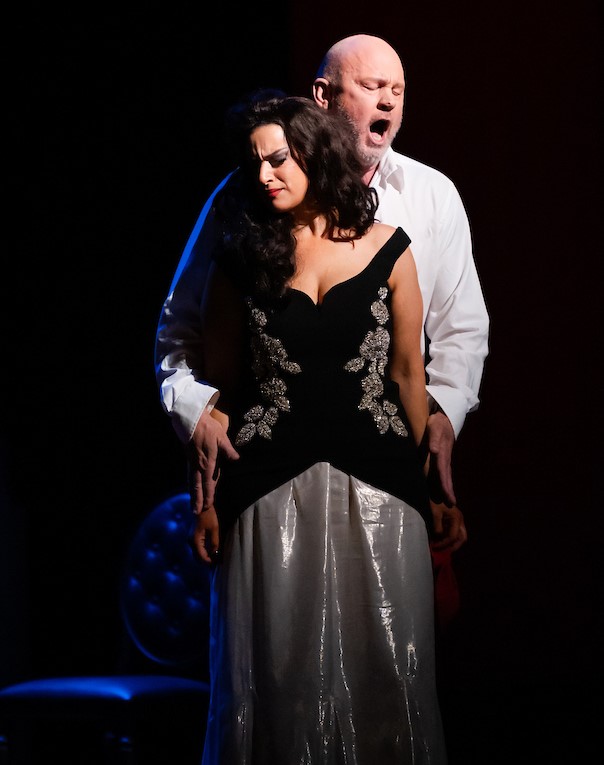
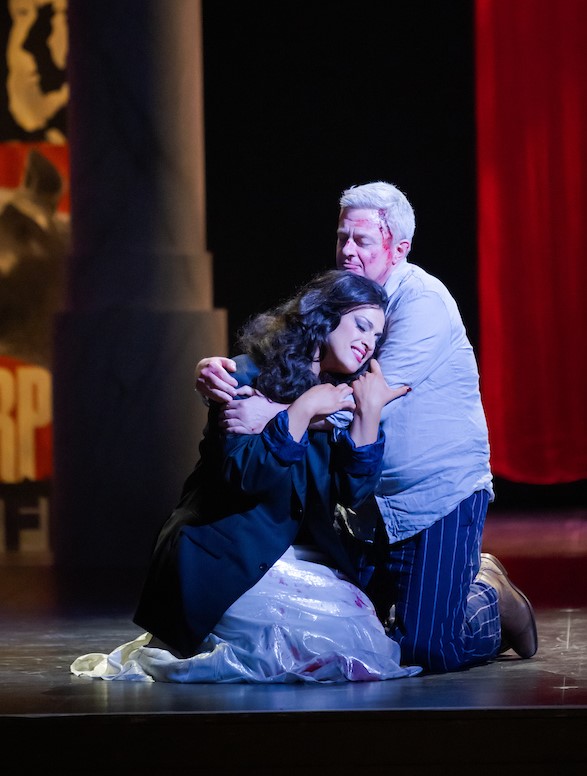
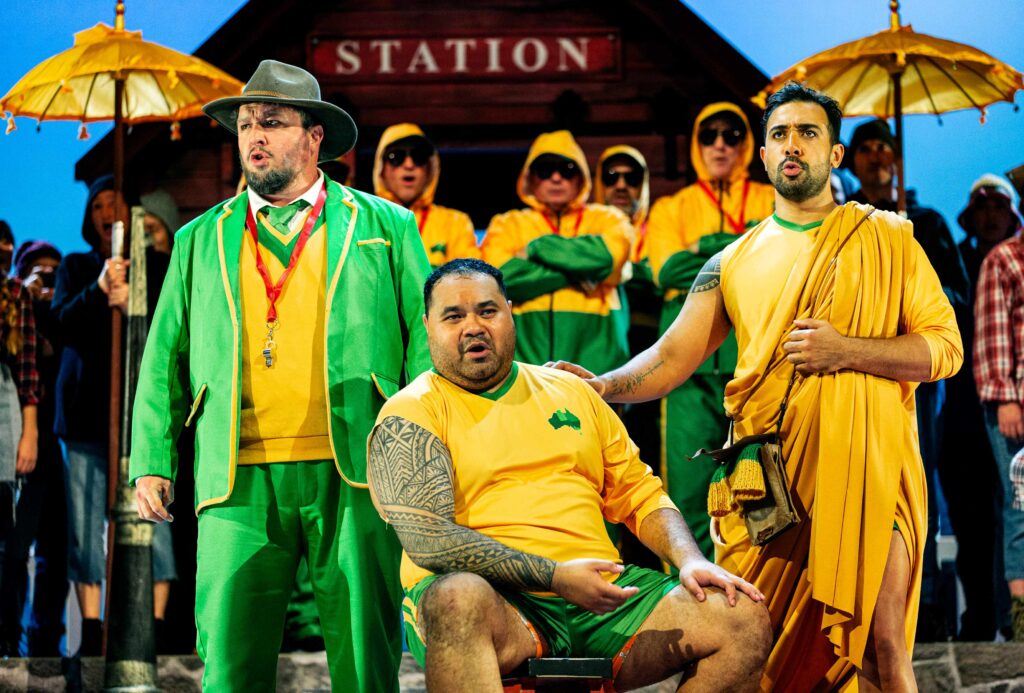 Act One: Wade Kernot (Coach), Manase Latu (Count Ory), Moses MacKay (Raimbaud), NZ Opera Chorus – photo credit: Lewis Ferris
Act One: Wade Kernot (Coach), Manase Latu (Count Ory), Moses MacKay (Raimbaud), NZ Opera Chorus – photo credit: Lewis Ferris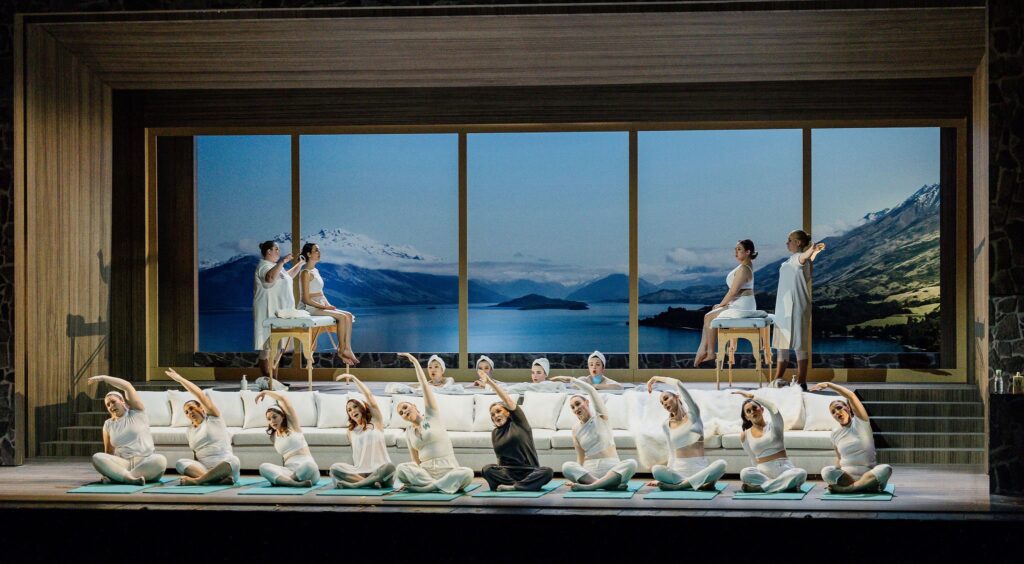 Le Comte Ory – Act Two (beginning) – NZ Opera Chorus, with Emma Pearson (Countess Adele), Tayla Alexander (Alice) and Andrea Creighton (Ragonde)
Le Comte Ory – Act Two (beginning) – NZ Opera Chorus, with Emma Pearson (Countess Adele), Tayla Alexander (Alice) and Andrea Creighton (Ragonde)